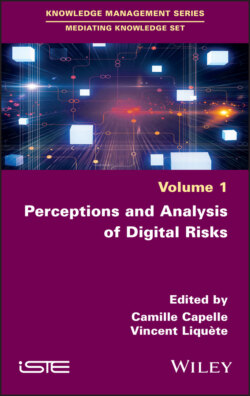Читать книгу Perceptions and Analysis of Digital Risks - Группа авторов - Страница 10
Educational response and research
ОглавлениеRisk has become a social and informational reality, both objective and subjective, “that drives us to act”. Its integration as a regulated condition of the informational experience supposes an intelligence and an experience of the activity shared with the students. The integration of the risk dimension in teaching and learning activities is associated with “media literacy” in our educational system. Its objective is the awareness and management of students’ activity in an information environment. The ability to assess digital risks and the possibility of managing events/information in a critical way are the horizon. Media education opens up, beyond the mastery of informational tools, by taking into account the fragility of information systems or illicit uses, to the informational experience and to an information culture. It is not a matter of protecting ourselves from risk, but of designing support for students that is adapted to information contexts. “Risk education”, integrated into teaching and learning, examines the new skills required for an information society, as well as pedagogical mediation. Risk education integrated with information literacy responds to the need for the new regulations (Beck) required for an information society. Different paths, the plurality of situations and uses, are thus to be explored in the educational field. The notion of risk, as a condition, is not a limit to be fixed but a critical tool within learning.
This book brings together various contributions at the intersection of professional action and research. The proposed analyses are in line with the second edition of the conference “Knowledge and Information and Information in Action (CIA)” entitled “From risk perceptions to action in a digital context” held on April 3 and 4, 2019 at the University of Bordeaux, France, organized around the project eRISK (Education 2.0 and “digital” risks; representations and pedagogical practices) led by the RUDII-IMS team8. It proposes a renewed focus on the perceptions of risks in the educational and professional context. Different paths for research and action are presented: those of the subjective dimension of risk perception in the shaping of practices and the construction of action strategies in a situation9; or those of objectivizing analyses of an information ecology (arena) and the organization of action devices. The epistemological limits of information sciences are questioned as much as the uses and practices.
Risk belongs to the cultural transpositions linked to digital technology. It becomes a principle of activity in an uncertain world, a critical and social component in support of education. This research contributes to its understanding and its reflexive inscription in information, “academic” and societal behaviors.
Franc MORANDI
September 2021
1 1 Beck, U. (1986). La société du risque : sur la voie d’une autre modernité. Flammarion, Paris.
2 2 Capelle, C. (2018). Rapport final de projet de recherche eR!SK – risques numériques et école 2.0. Research report, IMS Laboratory, University of Bordeaux, Bordeaux.
3 3 Citton, Y. (2017). The Ecology of Attention. Polity Press, Cambridge.
4 4 Cordier, A. (2017). Les enseignants, pris dans des injonctions paradoxales. Hermès, La Revue, 78(2), 179-186.
5 5 Bruner speaks of implicit theories: “It is not enough to describe what the child is doing: we must be able to determine what they think they are doing and why”. Bruner, J. (1998). Le développement de l’enfant : savoir-faire, savoir dire. Presses Universitaires de France, Paris.
6 6 Dioni, C. (2008). Métier d’élève, métier d’enseignant à l’ère numérique : rapport de recherche pour l’INRP. INRP, Paris.
7 7 Capelle, C. and Rouissi, S. (2018). Représentations et stratégies de jeunes enseignants face aux réseaux sociaux. Les Cahiers du numérique, 14(3–4), 13–34.
8 8 RUDII: Représentation Usages et Développement des Ingénieries de l’Information, IMS: laboratoire de l’Intégration du Matériau au Système (IMS, CNRS UMR 5218). CNRS, l’Université de Bordeaux, INSPE d’Aquitaine (2016–2019). Projet eRISK: “Risques numériques et école 2.0 Éducation des jeunes générations et responsabilité des enseignants”. Hypothèses [Online]. Available at: https://erisk.hypotheses.org/category/projet.
9 9 Lave, J. and Wenger, E. (1988). Situated Learning. Legitimate Peripheral Participation. Cambridge University Press, New York.
